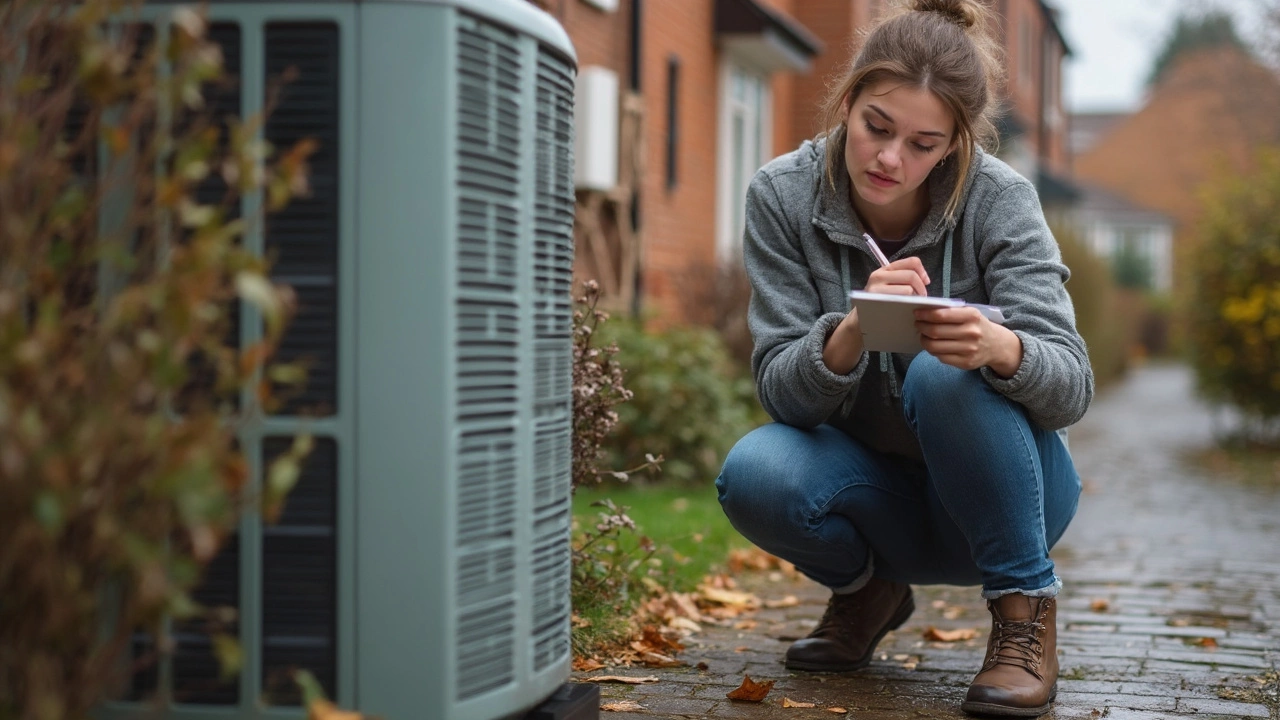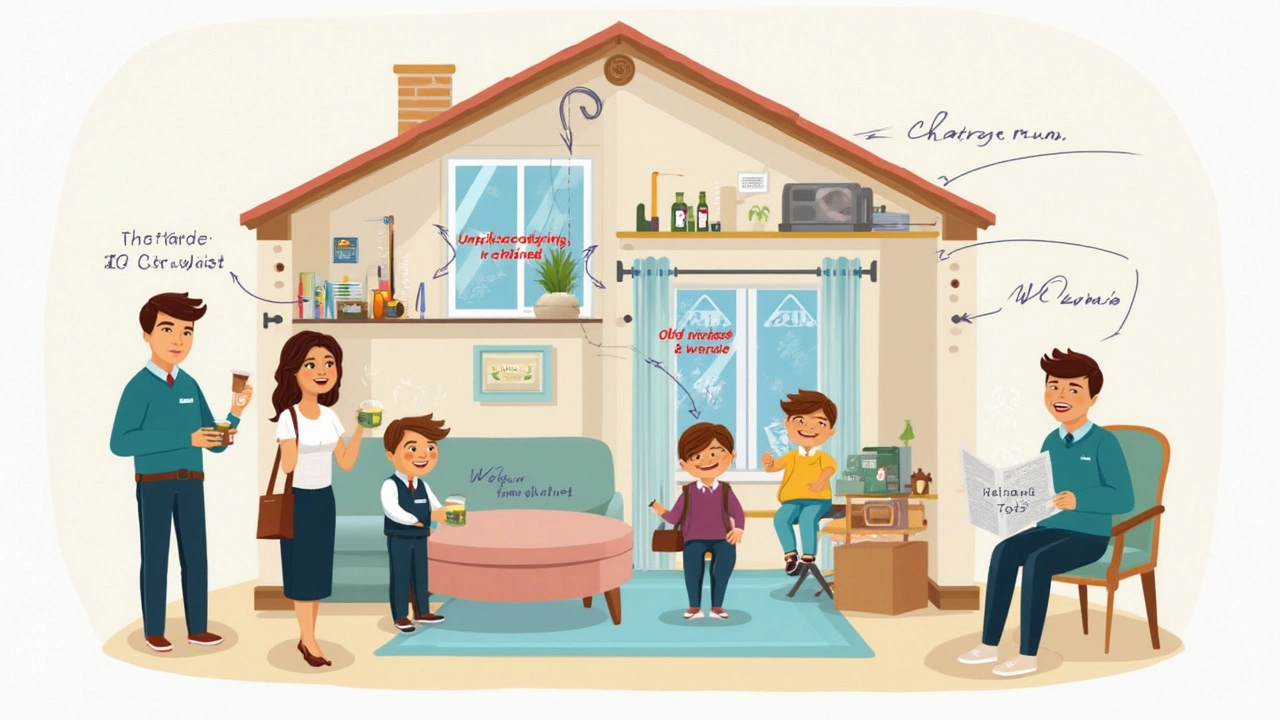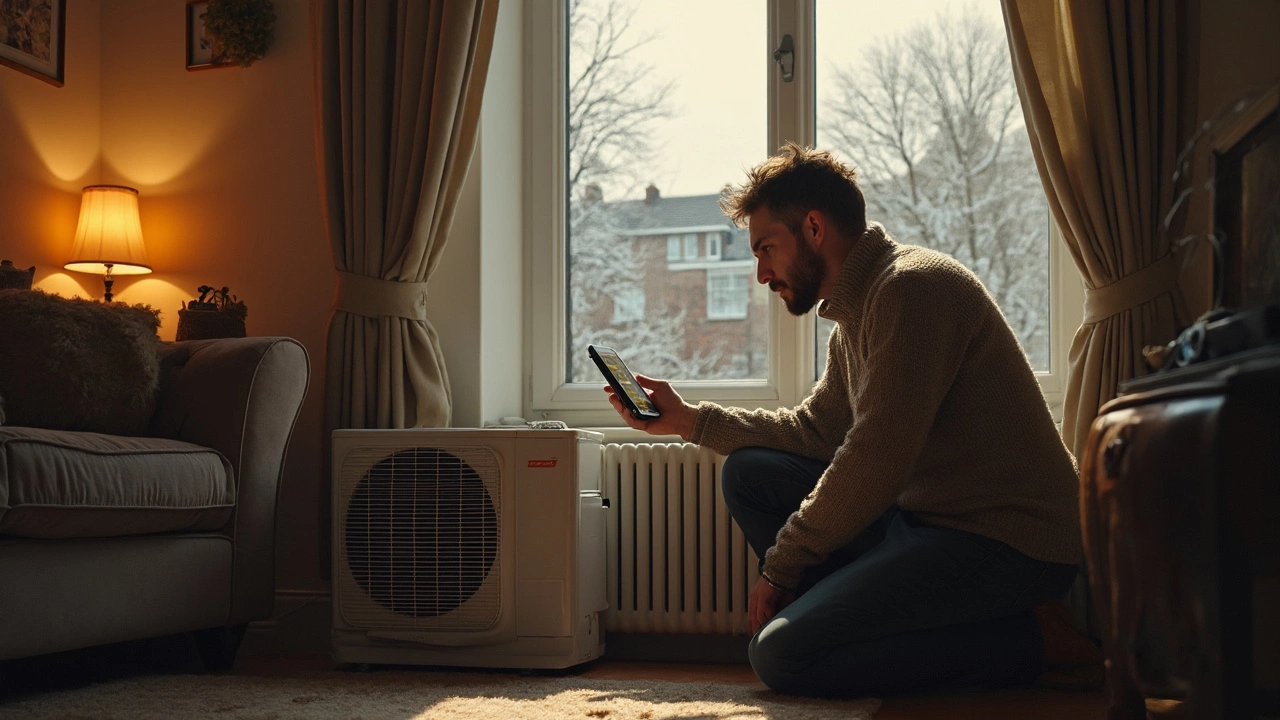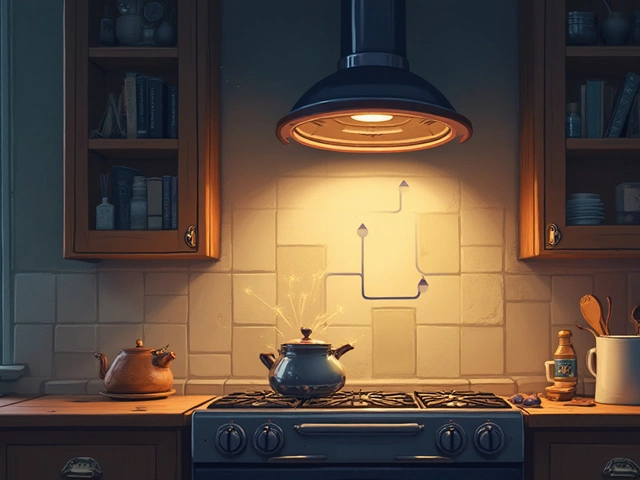Most people forget their heat pump exists—until the thing stops heating or cooling like it should. One minute, you’re enjoying a comfy living room, and the next, you’re wondering why your toes are frozen in May. If the heat pump’s on the fritz, catching those early warning signs can save you money, stress, and a call from a very grumpy spouse or, in my case, my daughter Piper complaining the house feels like a fridge.
Spotting issues isn't rocket science, but you do need to know what’s “normal” for your system. Is the heat pump running much longer than usual? Does the air coming out feel lukewarm, even when you crank it up? Pay attention to changes like louder buzzing, rattling, or repeated clicking sounds. Odd smells, like a musty basement or burning plastic, are never good. Every one of these is telling you something—ignore them, and you’re just begging for bigger headaches down the road.
Regular folks can catch most problems early by trusting their instincts and doing a few easy checks. You don’t need fancy tools or a knack for DIY—just a willingness to listen, look, and notice what’s different from the usual routine.
- Recognizing Normal vs. Faulty Operation
- Common Signs of Heat Pump Problems
- Unusual Noises and Odors
- DIY Checks Before Calling a Pro
- When to Get Professional Help
Recognizing Normal vs. Faulty Operation
If you want to keep your comfort up and repair bills down, you need to know what “normal” looks like with your heat pump. Most days, your system should switch between heating and cooling cycles smoothly and quietly. It fires up, runs a bit, and then shuts down once your home hits that sweet spot. Air coming from your vents should be consistent—not weak or barely there. You shouldn’t hear anything wild, just a low hum or gentle airflow.
Let’s get real: even the best HVAC gear makes some noise. A faint click when it switches modes is fine. A whoosh or light whirring sound is also totally normal. What’s not normal? Sudden grinding, banging, or non-stop buzzing—that’s your heat pump begging for attention. And if you have to adjust your thermostat way higher (or lower) than usual just to stay comfortable, your system isn’t performing right.
- Heating mode: You should feel warm air—maybe not blazing hot, but warmer than the room. If it feels cool or barely warm, something’s off.
- Cooling mode: You should get steady, chilled airflow. If it’s weak or room temperature, your heat pump might be struggling.
- Defrost cycles: During cold weather, your heat pump will run a “defrost mode”—it may blow cooler air for a few minutes but should switch back to heat quickly.
Energy bills can also tell you a lot. The Department of Energy says a typical home’s heating and cooling makes up about 50% of total energy use. If your bills suddenly spike without a change in weather or you’re using your system the same way, don’t brush it off. That usually means your heat pump is working overtime—often because there’s a problem.
| Normal Operation | Faulty Operation |
|---|---|
| Short, steady cycles | Long or rapid cycling |
| Low humming noise | Loud, unusual sounds |
| Consistent airflow temperature | Air feels unusually warm or cold |
| Energy bills stay steady | Spikes in energy costs |
Bottom line: If you know how your heat pump usually acts, it’s much easier to catch small problems before they turn into wallet-draining breakdowns. Don’t ignore those hints—it’s the difference between a quick fix and a big headache.
Common Signs of Heat Pump Problems
It’s surprisingly easy to overlook little signals that your heat pump might be struggling. Most folks just notice their house isn’t comfortable, but there are some dead giveaways if you know what to look for.
- Short Cycling: If your heat pump keeps turning on and off quickly, that’s called short cycling. Not only does this chew through electricity, but it often means there’s an underlying issue—like a clogged filter, thermostat problem, or a failing compressor.
- Weak Airflow: Stick your hand up to a vent. If you barely feel any air, even though the system sounds like it’s working overtime, that’s a red flag. Clogged ducts, dirty filters, or a blower issue could be the culprit.
- Inconsistent Temperatures: Is it sauna-hot in one room and downright chilly in another? That points to problems with ductwork, refrigerant, or even a malfunctioning thermostat.
- Spikes in Energy Bills: If your energy bill jumps for no obvious reason, but you haven’t been running extra appliances, the heat pump could be pulling extra power due to a hidden fault.
- Weird Noises: A healthy system should hum quietly. Grinding, rattling, screeching, or buzzing isn’t normal. It could be loose parts, debris, or serious motor trouble. Ignoring weird noises can mean pricey repairs later.
- Ice Build-Up: If you spot ice on the outdoor unit—even when it’s not freezing outside—that means defrost mode isn’t working right, or there’s possibly a refrigerant leak. Don’t brush this off; ice makes things way worse over time.
| Normal Heat Pump | Possible Malfunction |
|---|---|
| Steady, low noise | Loud rattling or grinding |
| Consistent airflow and comfort | Weak airflow, rooms feel unevenly heated |
| Normal energy bills | Sudden bill spikes |
Ignore early signs like these, and you’re probably calling for a heat pump repair sooner than you’d think. Take a minute each month to check things over—it seriously pays off.

Unusual Noises and Odors
When your heat pump starts making weird sounds or gives off odd smells, pay attention. These are classic signs something’s wrong, and ignoring them can turn a small repair into a major headache.
First, let’s talk noises. Heat pumps should run pretty quietly—think soft hum or gentle whoosh. If you hear:
- Banging: This usually points to something loose or broken inside, like a fan blade or even a worn-out motor mount.
- Grinding or squealing: These metal-on-metal sounds can mean bearing problems or the need for lubrication. Left alone, this can burn out key parts fast.
- Repeated clicking: Sometimes this comes from faulty relays or electrical issues. Not something to shrug off. Electrical trouble can get dangerous.
- Loud buzzing: Could be ice on coils, a failing motor, or issues with the compressor. If it’s way louder than normal, shut the unit off and check for visible problems.
Now, the smells. Trust your nose with heat pump repair issues. A sweet or chemical odor often means refrigerant is leaking—a serious problem that calls for a pro. A musty smell means mold or mildew is in your ducts or the air handler, which isn’t just gross; it’s bad for health. Burnt or electrical smells? Switch the heat pump off right away—something’s probably overheating or wiring’s on its way out.
To give you a quick guide, here’s a handy table:
| Noise/Smell | Possible Cause | Action |
|---|---|---|
| Banging Noise | Loose or broken internal part | Call a tech |
| Grinding Noise | Motor bearings | Turn off & schedule repair |
| Repeated Clicking | Electrical faults | Get professional help |
| Musty Odor | Mold/mildew | Inspect and clean ducts |
| Burning Smell | Electrical or overheating part | Turn off immediately, call for service |
| Chemical/Fruity Smell | Refrigerant leak | Shut down and call a pro |
Bottom line? New or strong noises or smells are your heat pump’s way of waving a big red flag. If you notice any of these, act fast. Sometimes it’s a small, cheap fix—if you catch it early. But if you wait, you could be facing a total breakdown.
DIY Checks Before Calling a Pro
If your heat pump is acting up, don’t panic—there are simple things you can try before calling in the pros. Sometimes, a quick check saves hours of hassle and a chunk of money. Here are some practical troubleshooting steps anyone can handle:
- Check the thermostat. Sounds obvious, but it’s worth making sure it's set to "heat" or "cool" depending on what you want, and the temperature setting isn’t accidentally changed. Make sure the batteries aren’t dead, too.
- Inspect your air filter. If your HVAC system has a dirty or clogged filter, your heat pump will strain to push air. Replace it if it looks gray or packed with dust (should be changed every 1–3 months anyway).
- Check the circuit breakers. Sometimes a tripped breaker can shut off your heat pump. Find the dedicated breaker at your electrical panel and make sure it’s switched on.
- Look for ice or debris outside. Head outside and see if the outdoor unit is blocked by leaves, dirt, or—yes—ice. A unit crusted in ice can’t draw air properly, especially in winter.
- Listen and observe. Any new rattling, buzzing, or grinding coming from the unit? These noises are usually pointers to loose parts or obstructions.
- Check air registers and vents. Walk around the house and make sure supply and return vents aren’t blocked by furniture, rugs, or piles of Piper’s toys. Good airflow is key!
If you like numbers, here’s a quick reference for what you might encounter the most:
| Issue | DIY Fix Rate (%) |
|---|---|
| Thermostat problems | 55 |
| Dirty air filter | 65 |
| Tripped breaker | 35 |
| Blocked outdoor unit | 25 |
| Closed/blocked vents | 40 |
Don’t try to open up the heat pump or poke around the wiring unless you really know what you’re doing. Stick to these simple checks—if things still aren’t right, it’s probably time for a professional heat pump repair so you aren’t left high and dry when you need comfort most.

When to Get Professional Help
Sometimes, it’s smarter to step back and call a pro for heat pump repair instead of trying to handle things yourself. Not everything is a quick DIY fix—especially when working with electricity, refrigerants, or major parts. Messing around with these can get you hurt or make things worse.
If you notice any of the following, don’t hesitate:
- Heat pump keeps tripping the breaker: This can be an electrical issue, which is both dangerous and tricky.
- Ice builds up on coils (and doesn’t melt after a defrost cycle): A little frost is normal, but thick ice that won’t go away points to a bigger problem only a technician should handle.
- Burning or chemical smells: Turn the system off. This could mean an electrical failure or a refrigerant leak—both are serious.
- Loud grinding, screeching, or banging sounds: Weird noises from a heat pump aren’t just annoying—they can be a sign something’s about to break big time.
- No heat or cool air even when the system runs nonstop: If you’re cranking the thermostat and nothing changes, something inside the HVAC system (like reversing valves, compressors, or wiring) is likely shot.
How much could a professional visit cost? It varies, but here’s a rough idea based on national averages from 2024:
| Issue | Average Repair Cost (USD) |
|---|---|
| Thermostat replacement | $150 - $250 |
| Capacitor or relay repair | $120 - $220 |
| Refrigerant leak repair | $250 - $1,200 |
| Compressor replacement | $1,000 - $2,500 |
Tip: If your heat pump is still under warranty, check before paying out of pocket—some parts or labor might be covered. And if you’re not sure what’s wrong or just don’t feel comfortable poking around, bringing in a certified HVAC tech is the fastest track to a safe, lasting fix. No shame in playing it safe—my daughter once asked why our house smelled funny, and turns out, it was a blown capacitor! Best $200 I spent all year.





